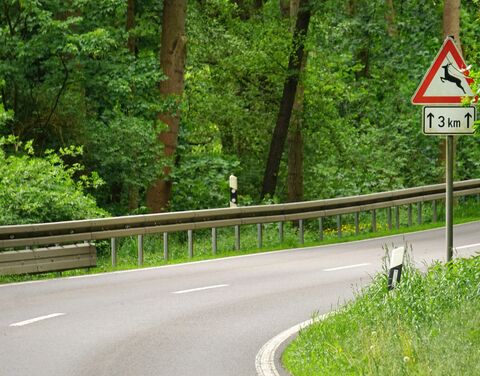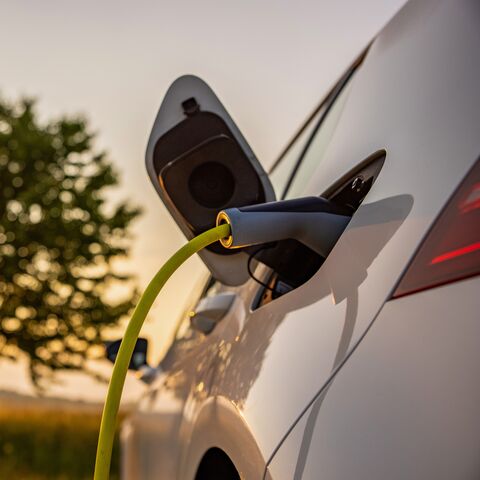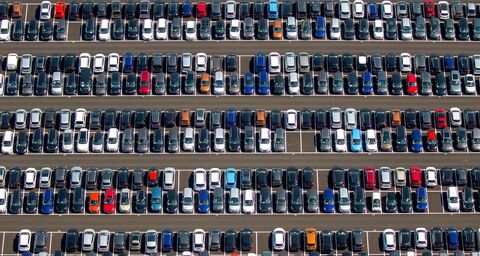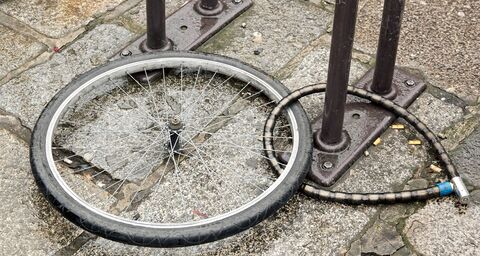
Wildlife vehicle collision: what to do and where to be careful
AXA spent over CHF 11.5 million on accidents involving wildlife last year. The average cost per claim now stands at almost CHF 3,800. The risk of damage due to a collision with wild animals is especially high in the cantons of Fribourg, Jura, Thurgau, and Schaffhausen.
Just over 3,000 claims for damage caused by collisions with wild animals were reported to AXA, Switzerland’s largest motor vehicle insurer, last year. This means that the number of claims has remained constant over the past five years (apart from a coronavirus-related slump in 2020).
Fribourg, Jura, Thurgau, and Schaffhausen particularly affected
AXA’s claims statistics show that the likelihood of colliding with an animal differs from region to region in Switzerland. Drivers should be particularly vigilant in the cantons of Fribourg, Jura, Thurgau, and Schaffhausen. The frequency of accidents, i.e., the number of cases per insured car, ranges between 6.9 and 5 per thousand in these cantons. This means that the risk there is around twice as high as the Swiss average (3.2 per thousand) and up to eight times higher than in Basel-Stadt (0.8), where there are the fewest accidents involving wildlife. Nidwalden, Geneva (both 1.2), and Zug (1.8) are also less frequently affected. “In rural cantons, there are more roads that run through forest areas and, in general, there are more wild animals on the move, which tends to lead to more frequent collisions with wildlife,” explains Michael Villiger, Head of Motor Vehicle Claims and member of the AXA Mobility Competence Center.
Claims costs at record high
In 2024, accidents involving wildlife cost AXA over CHF 11.5 million. The average cost per claim now comes in at almost CHF 3,800, which is 15% higher than in 2019, before the coronavirus pandemic, when accidents involving wildlife cost just over CHF 3,200. Compared to ten years ago (CHF 3,000 per wildlife accident), the average claims costs have risen by almost a quarter. “The reason for this is the significantly higher cost of spare parts and repairs, partly due to newer vehicle parts and the electronics installed,” says Michael Villiger.
A clear example of this trend is the vehicle’s hood, which is typically damaged in the event of a wildlife accident. The average cost of repairing the fender and hood is now around CHF 3,700. “If the headlight also needs to be replaced, the total repair cost today averages at least CHF 5,500,” explains Michael Villiger
Be careful when driving in the morning and evening
Wildlife vehicle collisions can happen at any time of day and in any season. “However, drivers should be especially careful in October, November, and December because, as the days get shorter, wild animals are more likely to be out and about at the same time as car drivers. In addition, deer and stags like to lick salt residue on the roadside in winter. As it is dark during morning and evening rush hour, they are often spotted too late or not at all,” explains Luca Genovese, Head of Research and Prevention at the AXA Mobility Competence Center. Drivers should therefore adjust their speed and be ready to brake at any time in the morning or evening – particularly in wooded areas and where there are warning signs.
Report a wildlife vehicle collision to the police immediately
If a wild animal does suddenly leap out in front of your car, it is better to brake hard than to try avoiding it. If you do hit it, you are required by law to notify the police immediately. The police will then call in a gamekeeper or other specialist to put it out of its misery if necessary. “Anyone who doesn’t report an accident to the police immediately or only does so at the insurance company’s request is liable to be prosecuted for animal cruelty,” says AXA-ARAG legal expert Fabrizio Howald. Prosecution for negligent or even intentional animal cruelty is possible.
How to avoid accidents involving wildlife
- Take wildlife crossing signs seriously, anticipate possible collisions, and protect wild animals and yourself against accidents.
- Take special care when driving on country roads, near hedges, tall fields of grain, and in wooded areas. Reduce your speed to a maximum of 70 km/h, increase the distance to the car in front of you, and pay special attention to keeping an eye on the right side of the road.
- Turn on your high-beam headlights when you can so that wild animals can see you as early as possible.
- As soon as you see a wild animal at the edge of the road, brake immediately, dim your lights, and honk your horn if the animal does not move away. Be aware of any vehicles behind you.
- Anticipate encountering more wild animals in the same place, as animals often roam in groups. This means that if there is one animal, there are also others, so as soon as the lead animal flees, the herd will nearly always follow.
- If a wild animal suddenly jumps out in front of your car, the best thing to do is brake hard, even on a slippery road, because anti-lock brakes will prevent your car from skidding. This can reduce energy and minimize the impact of any subsequent collision. Drivers should avoid swerving sharply.
What should I do if I still hit a wild animal?
- Stop the car and secure the accident site (hazard lights, warning triangle).
- Inform the police immediately (call 117). In Switzerland, wildlife vehicle collisions must be reported by law. If necessary, the police will call in other specialists (gamekeeper, hunter, vet).
- Wait for the police and do not try to approach the animal.
- The reporting requirement also applies to collisions with larger birds such as white storks and gray herons, as well as smaller animals such as beavers or martens – but not to hedgehogs or bats.





